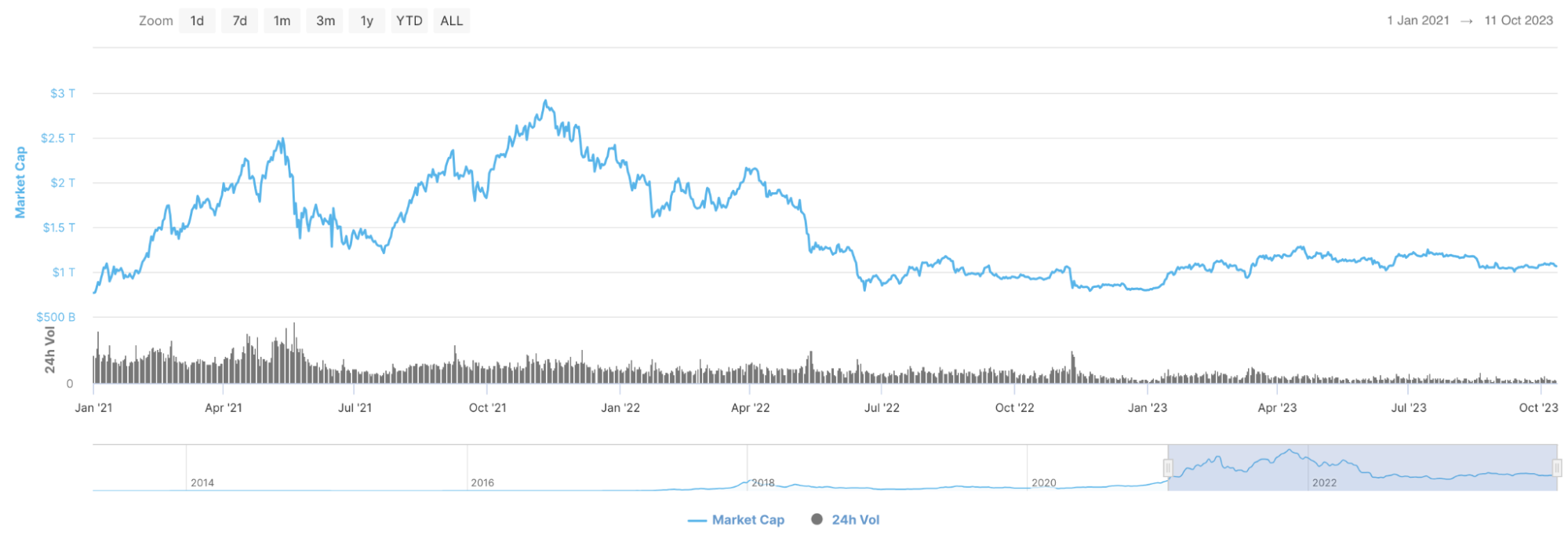Preparing For The Great Decoupling: Strategies For Success

Table of Contents
Understanding the Dynamics of the Great Decoupling
The Great Decoupling is driven by a confluence of factors, creating a complex and multifaceted challenge for businesses globally.
Geopolitical Factors
Underlying the Great Decoupling are deep-seated political and economic tensions. These include:
- Trade Wars: Escalating tariffs and trade restrictions imposed by both the US and China have disrupted established supply chains and fostered an environment of uncertainty.
- Technological Competition: The rivalry for technological dominance, particularly in areas like semiconductors, artificial intelligence (AI), and 5G, is intensifying, leading to restrictions on technology transfer and intellectual property protection.
- Ideological Differences: Diverging political ideologies and systems of governance contribute to mistrust and a desire for greater economic independence on both sides.
The impact on global supply chains is significant:
- Increased costs due to tariffs and logistical complexities.
- Disruptions to production and delivery schedules.
- The need for businesses to diversify their sourcing and manufacturing locations.
Technological Implications
The decoupling has profound implications for the global technology landscape:
- Technology Transfer Restrictions: Increased scrutiny and limitations on the transfer of sensitive technologies between the US and China.
- Intellectual Property Protection: Concerns over intellectual property theft and the need for stronger protection mechanisms.
- Development of Independent Technological Ecosystems: Both countries are actively investing in developing their own independent technological ecosystems, reducing reliance on each other.
This is particularly evident in sectors such as:
- Semiconductors: The US and China are engaged in a fierce competition to control the semiconductor supply chain.
- AI: Both countries are investing heavily in artificial intelligence research and development, aiming for technological leadership.
- 5G: The deployment of 5G networks is becoming a key battleground in the technological competition between the US and China. Many countries are actively promoting technological independence, seeking alternatives to technology from either the US or China.
Strategies for Navigating the Great Decoupling
Successfully navigating the Great Decoupling requires a proactive and multi-faceted approach:
Diversifying Supply Chains
Reducing reliance on single-source suppliers, particularly those located in either the US or China, is paramount:
- Identify and Vet Alternative Suppliers: Conduct thorough due diligence on potential suppliers in diverse geographic locations.
- Build Resilience into Supply Chains: Implement strategies to mitigate risks associated with disruptions, such as inventory diversification and flexible manufacturing processes.
- Near-shoring and Friend-shoring: Relocate manufacturing and sourcing to countries with closer political and economic ties. This minimizes geopolitical risk and improves supply chain agility.
Adapting Business Models
The changing geopolitical landscape necessitates adjustments to business strategies:
- Regionalization of Operations: Establish regional hubs to serve specific markets, reducing dependence on long and complex supply chains.
- Increased Costs and Logistical Complexities: Develop strategies for managing increased costs and logistical challenges associated with diversified supply chains.
- Enhanced Risk Management: Implement robust risk management protocols to mitigate potential disruptions to operations.
Investing in Technology and Innovation
Investing in technologies that reduce reliance on specific countries is crucial:
- Automation and Robotics: Automating manufacturing processes can reduce dependence on human labor in specific geographic locations.
- AI and Machine Learning: AI can improve supply chain efficiency, optimize logistics, and predict potential disruptions.
- Blockchain Technology: Blockchain can enhance transparency and traceability in supply chains, improving security and trust.
- R&D Investments: Increased investment in research and development is critical to developing technologies that reduce dependence on specific countries or regions.
Regulatory Compliance and Risk Management
Understanding and complying with evolving regulations is essential:
- Due Diligence and Risk Assessment: Conduct thorough due diligence to understand and mitigate potential regulatory and legal risks.
- Compliance Programs: Develop comprehensive compliance programs to ensure adherence to relevant regulations in both the US and China.
- Legal and Regulatory Expertise: Engage legal professionals specializing in international trade and regulatory compliance.
Opportunities in the Great Decoupling
While the Great Decoupling presents challenges, it also creates significant opportunities:
New Markets and Partnerships
The decoupling fosters the emergence of new markets and opportunities for collaboration:
- Emerging Markets: Countries less directly involved in the US-China rivalry may emerge as attractive investment destinations.
- Strategic Partnerships: Opportunities to forge strategic alliances with businesses in diverse geographic regions.
Technological Leadership
Companies can seize opportunities to become leaders in critical technologies:
- High-Growth Technologies: Technologies crucial for decoupling efforts, such as advanced manufacturing, cybersecurity, and clean energy, offer significant growth potential.
Conclusion
The Great Decoupling presents significant challenges, but also opportunities for businesses that adapt proactively. Successfully navigating this geopolitical shift requires diversifying supply chains, adapting business models, investing in technology and innovation, and diligently managing regulatory compliance and risk. Preparing for the decoupling, managing the Great Decoupling, and navigating the Great Decoupling effectively are not just reactive measures; they are strategic imperatives for long-term business success. Don't wait for the impact to be felt—start developing your strategies for adapting to this evolving geopolitical environment today.

Featured Posts
-
 The Bitcoin Rebound Analyzing Market Trends And Investment Strategies
May 09, 2025
The Bitcoin Rebound Analyzing Market Trends And Investment Strategies
May 09, 2025 -
 Tf Ls Commitment To Wheelchair Accessibility Navigating The Elizabeth Line
May 09, 2025
Tf Ls Commitment To Wheelchair Accessibility Navigating The Elizabeth Line
May 09, 2025 -
 Broad Street Diner Demolition Making Way For New Hyatt Hotel
May 09, 2025
Broad Street Diner Demolition Making Way For New Hyatt Hotel
May 09, 2025 -
 Should I Buy Palantir Stock Before May 5th Factors To Consider
May 09, 2025
Should I Buy Palantir Stock Before May 5th Factors To Consider
May 09, 2025 -
 Nhl Leading Scorer Leon Draisaitl Injured Status Uncertain
May 09, 2025
Nhl Leading Scorer Leon Draisaitl Injured Status Uncertain
May 09, 2025
